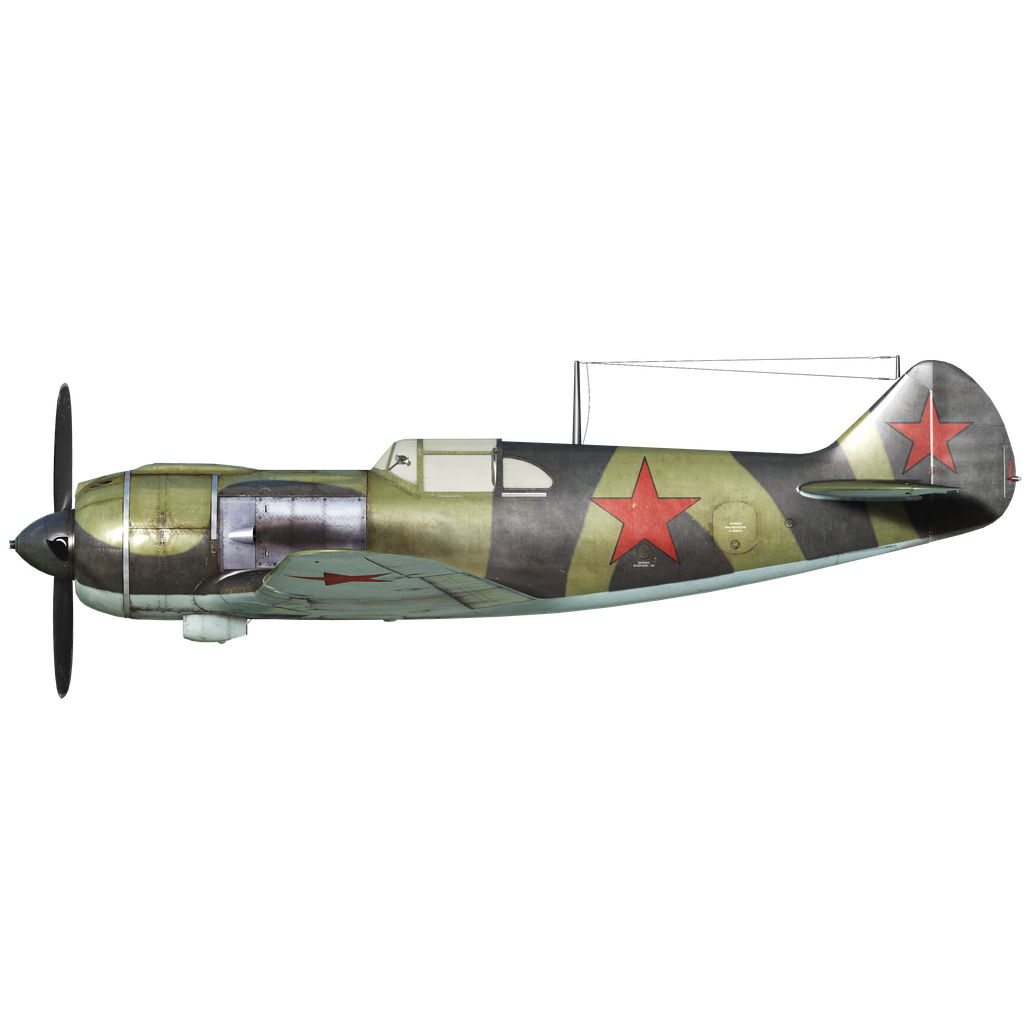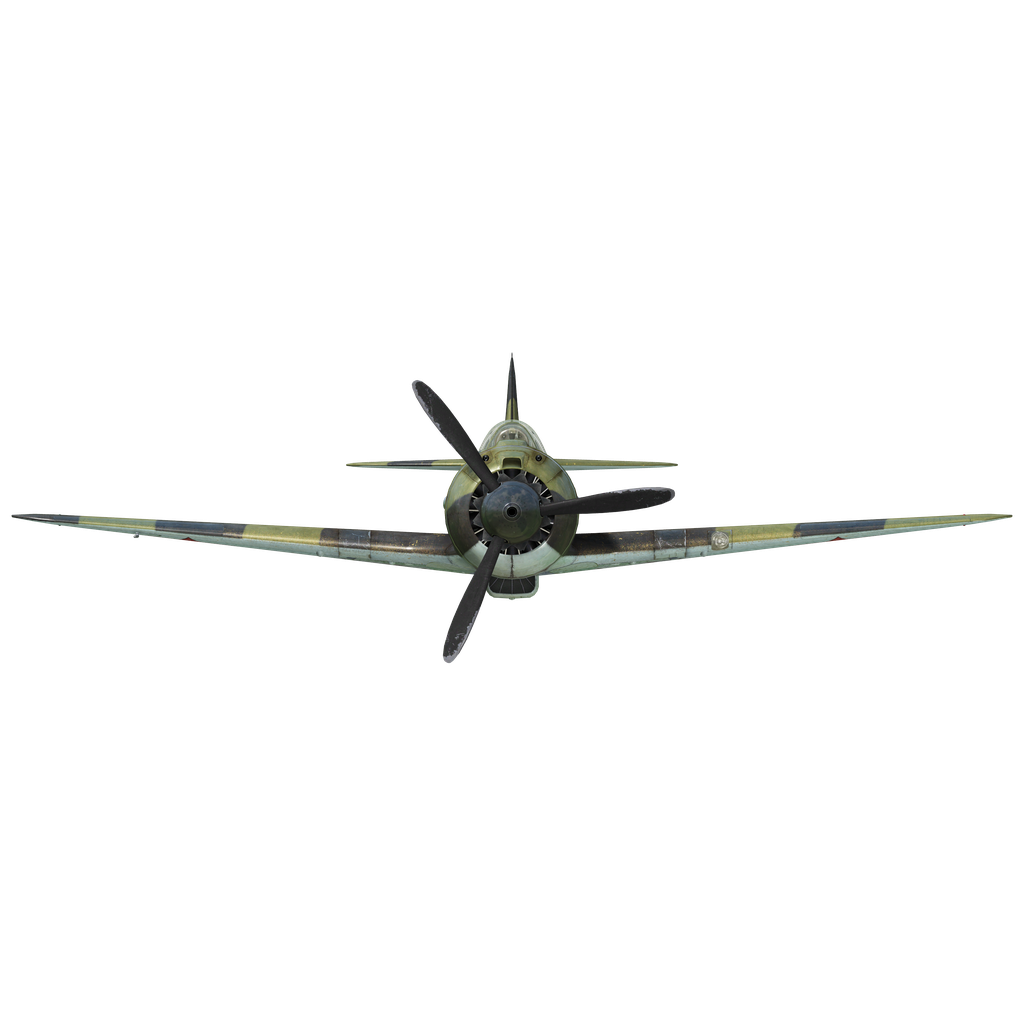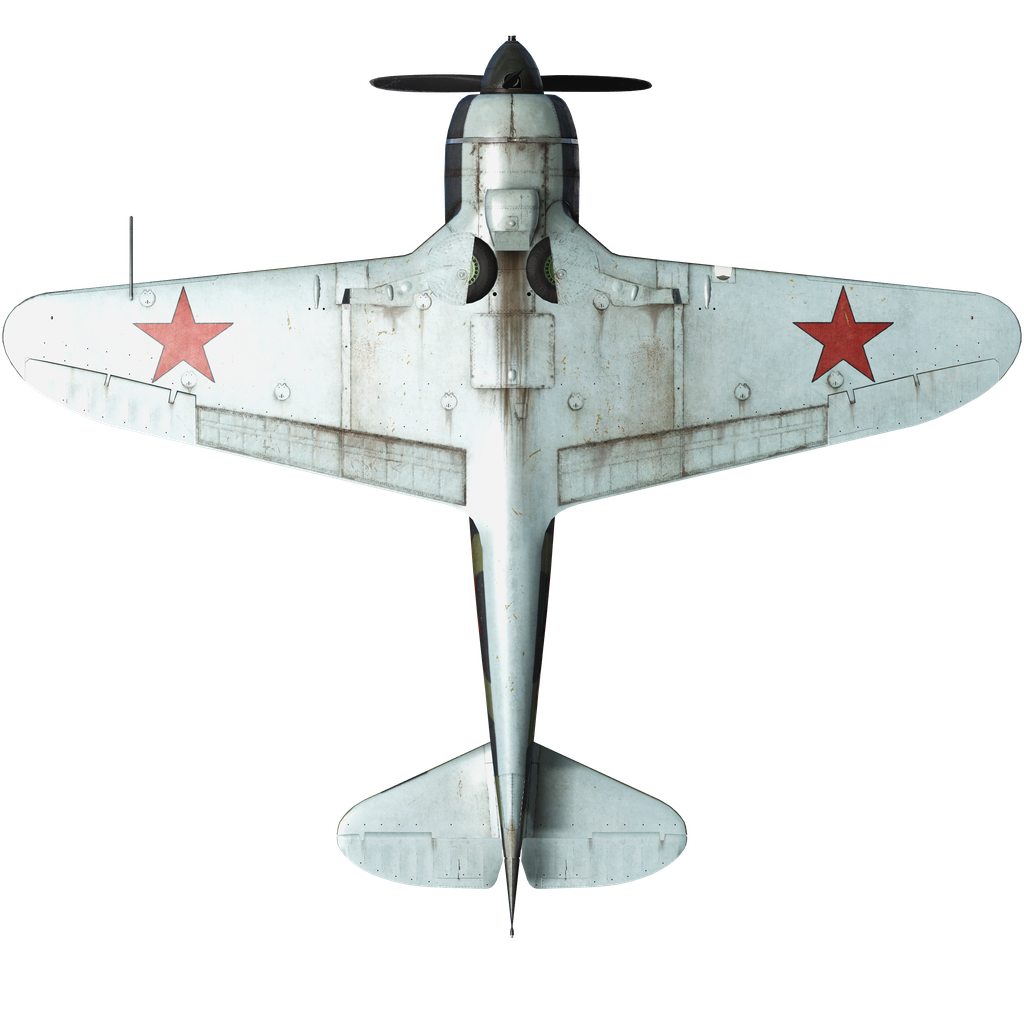The La-5 fighter was introduced in 1942 when a more powerful Shvetsov Design Bureau M-82 air-cooled engine was installed instead of a water-cooled engine on the airframe of the LaGG-3 fighter. The reasons for this are simple: the LaGG turned out to be heavier than the Yak, and the engines on the fighters were the same. At the same time, after the Su-2 was phased out, a large number of M-82 engines were produced for it, and their installation promised an increase of 300 hp. and increased survivability when bullets and cannon shells hit the engine. Although the drag of the aircraft increased due to the larger center section of the engine, the increase in power offset the increase in drag, allowing for greater speed and climb rate.
The eighth series La-5 was a single-engine wooden low-wing aircraft. Like the LaGG-3 and earlier La-5 modifications, the main structural material of the airframe was pine. Delta wood was used for the wing spars and some frames. The wooden parts were glued together. The fuselage consisted of a metal bulkhead and a wooden monocoque that was integrated with the vertical stabilizer. A design feature of the first series of La-5 was the presence of additional metal-clad formwork from the 5th frame in front of the cabin, which changed the fuselage cross-section from oval to round.
The pilot's cockpit was closed with a sliding canopy that locked in the open and closed positions. On the Series 8 aircraft, poor thermal insulation of the firewall and cabin sides meant that cockpit cooling was still inadequate, allowing heat from the engine and exhaust manifolds to enter the cockpit, resulting in a sharp rise in temperature during flight.
Serial fighters had larger oil coolers than the prototype. A carburetor air intake was installed in the upper part of the engine cowling, and the area of the exhaust manifolds and the cowling above the gun breech increased. From the 8th series aircraft, a complete set of the RSI-4 radio equipment was installed on every second aircraft (this was due to the transition to a new tactical unit — a pair of fighters).
The M-82A engine developed a maximum power of 1700 hp in boosted mode near the ground and 1335 hp at an altitude of 5300 m in nominal mode. The aircraft was armed with 2 synchronized 20 mm ShVAK cannons; if necessary, two bomb racks for carrying bombs of 50 or 100 kg could be installed under the wing.
According to some sources, a total of 200 aircraft of series 2 to 8 were built. Aircraft of the 8th series first appeared at the front in September 1942. The number of La-5s in the Soviet Air Force at the Stalingrad front can be judged from the reports of the 8th Air Army for September-October 1942, which included 18 fighter regiments, of which nine were armed with Yak-1, three with Yak-7, one with Curtiss P-40, one with LaGG-3 and four with La-5. But by the end of the year, the Air Force began to receive enough new vehicles for units armed with the La-5 to change from a rarity to the rule. The pilots of the 5th Guards Fighter Regiment noted: "In air battles with fascist planes, the La-5 proved to be exceptionally good. It is easy to fly, stable and durable".
Despite its good flight characteristics, the La-5 had many defects that had not been eliminated, and most importantly, "the pilots were tormented by the African heat in the cockpit, and the soles of the sergeants' boots were burned and cracked after ten flights."
The La-5 participated in combat from August 1942 until the summer of 1943, when it was replaced by more advanced variants.
1. S. Ivanov “La-5” War in the air No. 69 2001
2. “La-5” magazine “Aircraft History” No. 1 2006
3. Materials from the site airwar.ru






